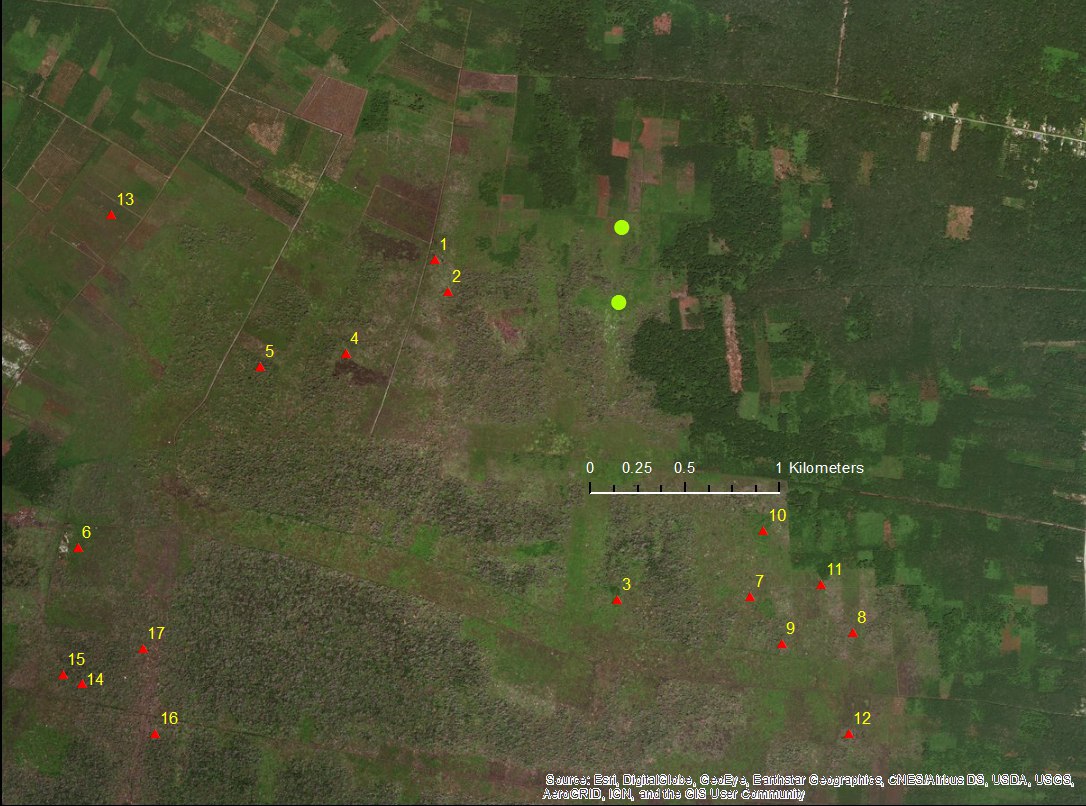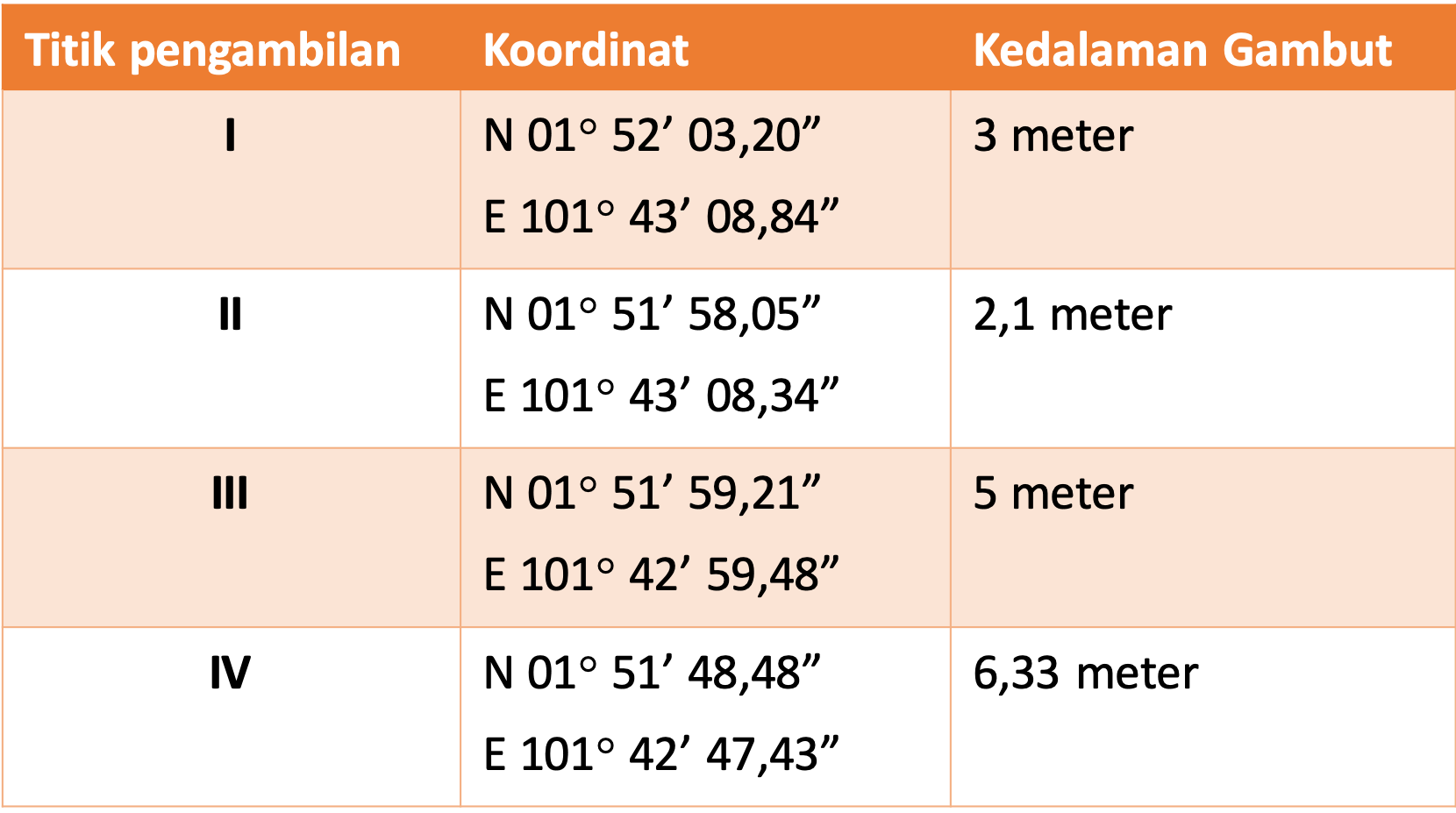A Look Back at Peatland Protection Commitments on President Jokowi's Birthday
By AdminPeatland Ring of Fire #3: Oil Palm Roots After Fire
Teluk Lecah village, which is included in the administrative area of Rupat District, Bengkalis Regency, Riau, has experienced forest and land fires (karhutla) since the beginning of 2019. Pantau Gambut Riau visited the location. The team found that burnt land is in deep peat and burnt former sites were used for planting oil palm.
The village of Teluk Lecah has been experiencing forest and land fires (karhutla) since the beginning of 2019. A visit by the Pantau Gambut Local Network to this village in Rupat District in Riau has found that not only have the fires took place in deep peatlands, palm oil plantations now stand in their place.
Teluk Lecah are among the villages in Riau that has long been hit by forest and land fires. The flames has had negative effects on the village’s residents and neighboring areas alike. Smoke from fires in Rupat District are carried by the wind as far as the city of Dumai and even Kuala Lumpur, Malaysia.
Data from NASA’s VIIRS sensors has found five hotspots in various locations and different coordinates around Teluk Lecah and the surrounding areas in February and March 2019. According to Pantau Gambut’s records, the hotspots have been found here in 2014 and 2015. The findings has since made Teluk Lecah one of the locations designated for the 2 million hectare peatland restoration initiative. Teluk Lecah is also one of the communities involved in the Rupat Island Peat Hydrological Unit (KHG), along with other villages in Rupat District such as Batu Panjang, Darul Aman, Hutan Panjang, Parit Kebumen, Pergam, Sukarjo Mesim, Tanjung Kapal, and Terkul.
During a joint visit with Andalas Kaliptra and the Riau Peatland Community Network (Jaringan Masyarakat Gambut Riau or JMGR) to the Teluk Lecah area between March 27 to 29, Andalas Pantau Gambut Local Network in Riau visited the Teluk Lecah area between March 27 to 29, the team has found that the fire-stricken areas have been dominated by woodland. Among the methods to extinguish fires in Lecah Bay from January to March 2019 has been to make a number of firebreaks so as to keep the fire from spreading to those areas that have not been burned. According to Azmi, a local official from Teluk Lecah, the efforts to put out the forest and land fires earlier this year involved the community, police and military personnel.
The fires occurred on land belonging to the local community. However, the Pantau Gambut Local Network team have not acquired details on the ownership of the land, which lay about 3 km from a concession area belonging to the PT Sumatera Riang Lestari company.
The team found a number of palm oil trees that appear to have been planted on the burned land. They also found piles of palm oil seedlings ready to be planted around the site. The new palm oil plants can be seen around a green dot (see the first picture).
The Pantau Gambut Local Network Team has yet to determine whether the fires on the monitored site in Teluk Lecah are intended to open new land for palm oil cultivation. However, the team saw the importance of protecting the peatlands around the Teluk Lecah area from the fires and unsustainable practices, as the land used for palm oil cultivation is in deep peatland. Palm oil plantations might be a viable economic source for local communities, but the use of deep peatlands for palm oil and other vegetation that are not endemic, such as palm oil, will impact the ecosystem.
The team measured peatland depth to be 4 points around the location of the fire. The peat in this area has a depth of between 2 to 6 meters.
According to the Annual Action Plan (Rencana Tindak Tahunan or RTT), KHG Rupat Island are among the areas that have been prioritized for peatland restoration in2018. However, the team found that no such activities have taken place in Teluk Lecah Bay, Teluk Terkul, and Teluk Pergam.
The team has yet to detect any steps to restore peatland in other villages in Rupat. However, according to information obtained from a number of village officials, there has been no peatland restoration activity in the entire Rupat District.
A statement from Azmi, the headman of Teluk Lecah Village in 2018 indicated that there have been efforts to place coordinates for 101 canal blocks along the areas hit by fires. Up until the end of March, there has been no guarantees whether the canal blocks have been made on the designated coordinates. As part of the infrastructure to restore 2 million hectares of peatland through rewetting, the canal blocks are vital in the team’s aim Canal blocks are among the wetting infrastructures in the program to restore 2 million hectares of peatland and maintain their moisture levels to keep them from becoming flammable.
The lack of construction to restore peatland in the Rupat District needs attention. In addition to having an impact on Indonesia's efforts to reduce carbon emissions, the delay in peat restoration activities in areas such as Rupat will keep Indonesia to fail in fulfilling its duties and responsibilities to stop "exporting" haze from forest and land fires to the ASEAN region in line with the ASEAN Agreement on Transboundary Haze Pollution (AATHP), which Indonesia ratified in 2014.





